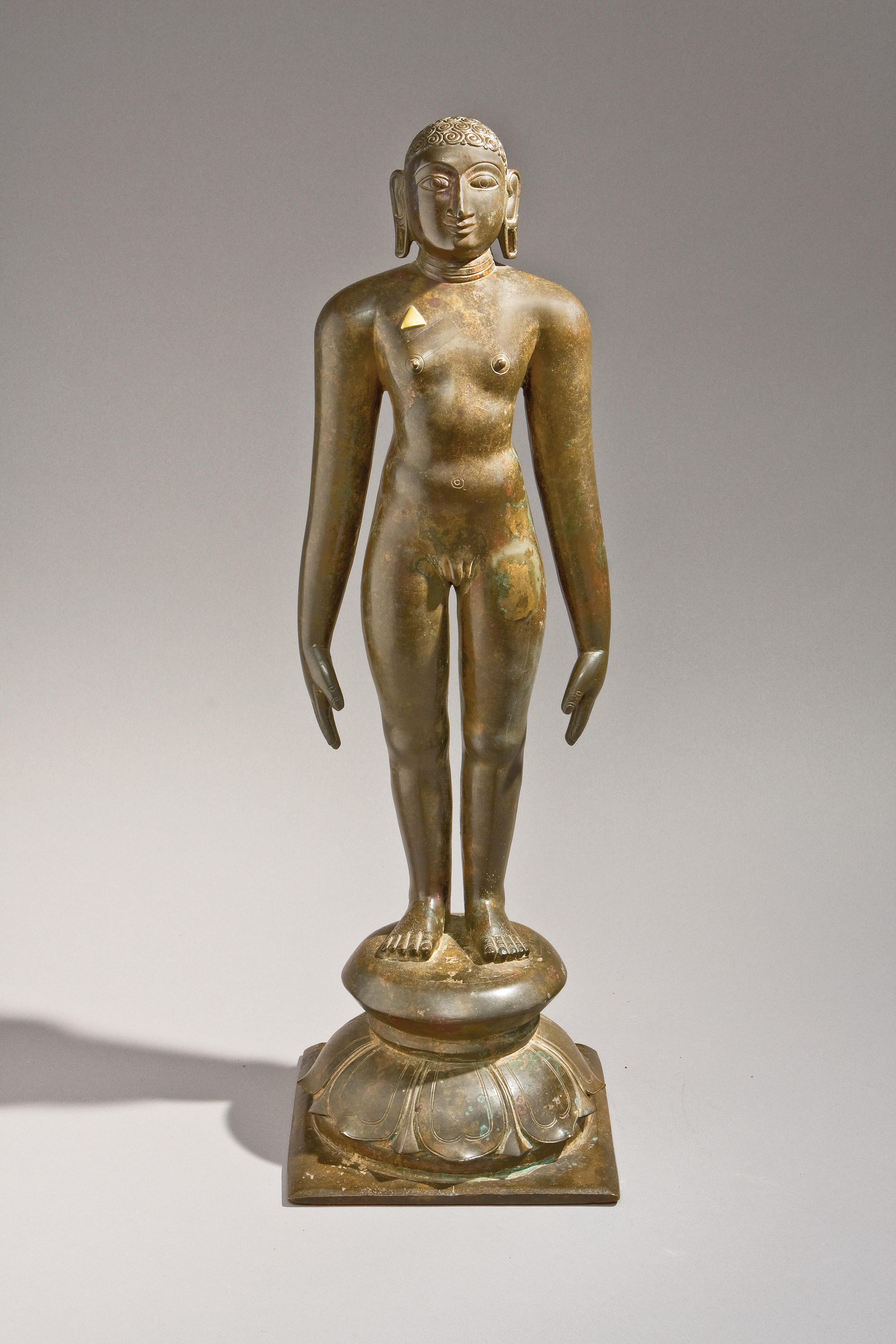Home / Processional Bronzes of the Buddhist and Jain Faiths
Processional Bronzes of the Buddhist and Jain Faiths
There is textual and archeological evidence that Buddhism and Jainism were practiced in south India as early as the first century BCE and maintained a prominent presence in various communities through at least the fifth century. The rise of devotional Hinduism from the sixth century on, which was shaped by the formation of new and more complex temples and rites, significantly altered the appeal of these faiths. The proselytizing efforts of the poet-saints are evident in their hymns. This hymn was written by the Shaiva saint Appar, who converted from Jainism and wrote vehemently against his former faith:
We have the good fortune of singing our Lord
to our hearts’ content,
of repulsing the shameless Jain monks.
The king of immortals,
the Lord who graciously rules us,
S[h]iva, the god of gods who rose as the flame
which Ayan [Brahma] and Mal [Vishnu] could not know,
dwells in my heart.
If Death himself were to declare
his dominion over us and command us to serve him,
we would refuse,
for the Lord’s eight attributes are ours.1
Nevertheless, the Buddhist and Jain faiths maintained a presence throughout the Chola period, as is evidenced in a number of surviving processional bronzes reflective of these faiths. Although the Chola rulers were mostly devout followers of the Shaiva faith, there is evidence, for instance, of female royal patronage of Jain shrines under the reign of emperor Rajaraja Chola (985–1014). Buddhist artistic activity at the coastal town of Nagapattinam prevailed, particularly in the eleventh century, largely due to growing diplomatic relations between the Chola rulers and the Javanese kingdom of Southeast Asia.
Buddhist and Jain religious institutions in Chola period south India received from their followers a range of processional bronze images of deities, suggesting that great annual festivals were equally vital in these faith communities. Two sculptures in this gallery, a Jain Tirthankara and a Buddha, exemplify the creative encounters between these communities. These bronzes emphasize an ascetic simplicity in articulating their respective deities. They bear similarities to Hindu images in their scale and sensuous modeling, which suggests that the same artisan workshops produced bronzes for various faith communities.
This sculpture depicts one of the twenty-four Jinas (Victors) or Tirthankaras (Ford-Makers) in the Jain belief system. It was likely once set into a pedestal base and carried as a procession image. Despite an emphasis on ascetic simplicity that is comparable to the Buddha nearby, it displays the sensuous forms typical of Chola period bronzes. As is evident from the figure’s nakedness, this image reflects devotional practices of the Digambara (Sky-clad) sect. The triangular gold mark on the upper right of his chest likely distinguishes this Tirthankara from others; however, it is not possible to identify this figure without further information. As is characteristic, the Tirthankara stands stiffly erect with downward stretching hands in a posture of penance. The elongated earlobes, arms, and fingers signify his spiritual advancement.
Despite the strong sectarian rhetoric of early Shaiva saints, the port town of Nagapattinam was a center of Buddhism that flourished under the Chola rulers. This bronze standing figure portrays the historical Buddha. Buddhists also call him Tathagata, or Thus-Gone One, a reference to his status as a being who has arrived at perfect knowledge. Similar to the Jain Tirthankara, or Ford-Maker, the meaning of Tathagata suggests a crossing as the way to spiritual attainment. The style of this figure exemplifies Nagapattinam bronzes. The inscription on its pedestal identifies it as a processional image created for a sacred festival, or tiru-utsavam, commissioned by a guild of metal-workers. While the presence of an inscription contrasts with Chola Hindu practice, the stylistic similarities of this Buddha with the Hindu deities in this exhibition indicate that guilds of metalworkers produced images for various faith communities.
1. Tevaram 6.312.10. Translated in Indira Viswanathan Peterson, Poems to Siva:
The Hymns of the Tamil Saints (Princeton: Princeton University Press, 1989), 296.
Jina
Chola period, late 11th–12th century
Copper alloy and gold appliqué
H. 22 x W. 7 x D. 7 in. (55.9 x 17.8 x 17.8 cm)
Kapoor Galleries, Inc.
EnlargeBuddha
Chola period, ca. 1070–1120
Copper alloy
H. 27 1/4 x W. 9 1/2 x D. 9 1/2 in. (69.2 x 24.1 x 24.1 cm)
Asia Society, New York: Mr. and Mrs. John D. Rockefeller 3rd Collection, 1979.15
Enlarge



 Share
Share